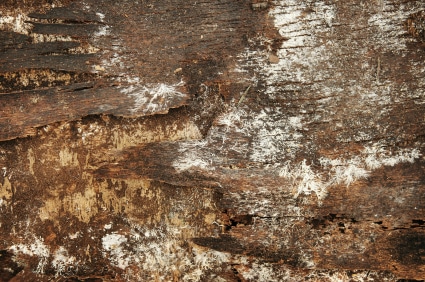Call us
we are available at (514) 319-0231

Many signs can be red flags that there could be water infiltration or excessive humidity, both of which can lead to fungal contamination (mould).
Contact us

Here are some signs to watch out for when checking for mould:

![]()
In the long term, these could signal both a decrease in the quality of the air anda decrease the quality of the building (for example: a reduction of the price of a property during a sale).

Here are different answers to your questions that can help you better understand the effects of these issues on a building and its components.
What is efflorescence?
This is a crystalline white deposit that appears on building materials, normally concrete, and is caused by the presence of significant amounts of water or moisture. The water as it evaporates will leave salts on the surfaces. If you see this appearing on your foundation walls, then it is a clear sign that there has been at some point or currently is a moisture problem.
What is a vapor barrier?
It is a membrane (plastic, aluminum, etc.) that is found in the exterior walls and ceilings of the house. Its presence is intended to prevent hot, humid air from entering the cooler materials in the wall.
Do you always have to replace the affected materials?
It depends on the degree of damage to the material and its porosity. If the material is damaged only on the surface, it can be sanded or cleaned, it does not need to be removed. However, in general, moldy porous materials will need to be replaced (mineral wool, plasterboard, wood, etc.).

By seeing the condition of the materials, is it possible to date an infiltration?
Dating an infiltration by the state of the materials is possible up to a point:
It should be understood that molds can grow very quickly under optimal conditions. Thus, in the laboratory, an incubation of one week makes it possible to obtain identifiable molds. Indoors, conditions are not optimal and it takes longer to have large colonies. In our experience it takes several weeks or even months before a surface is covered with mold. However, the condition of the structural timber allows for longer-term dating. This is because wood is naturally resistant to mold and will not rot immediately.
Usually, the detection of mold in a building is carried out by visual inspection. Nevertheless, it is also possible to identify them by their smell. For their part, mold is often a symptom of underlying problems. They can come from a lack of ventilation in a room of the house, from infiltrated water that causes condensation or from a pile of moisture. If you can spot them visually, you need to act quickly to stop their development.
Most of the time, these molds are noticeable at first glance. They are distinguished mainly by dark spots or kinds of dark circles in ceilings, walls, attics, pipes or crawl spaces. They are also characterized by their sparkling appearance. You can easily discern them by the smell of earth or rot they release.
There are several thousand molds. Some of them are invisible to the naked eye. Depending on their nature, they can multiply in a corner of a house and take up residence on various organic materials: paper, wood, furniture, plants, plaster, food, fabrics ...
When mold is large, its spores can cause many health problems. The elderly as well as young children could suffer greatly. And it can cause severe allergies, diseases of the respiratory system and many more.
In any case, know that certain gestures, which you yourself can perform, can prevent the development of mold: ventilate, clean wet areas, dehumidify, stop leaks in the house, monitor humidity ... At the slightest concern, do not hesitate to contact us, so that we can intervene to avoid the proliferation of these molds.